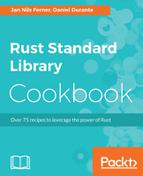Let's start with our intention: we want to create a macro called multiply that accepts an undefined amount of parameters and multiplies them all together. In macros, this is done via recursion. We begin every recursive definition with the edge case, that is, the parameters where the recursion should stop. Most of the time, this is where a function call stops making sense. In our case, this is the single parameter. Think about it, what should multiply!(3) return? It doesn't make sense to multiply it with anything, since we have no other parameter to multiply it with. Our best reaction is to simply return the parameter unmodified.
Our other condition is a match against more than one parameter, a $head and a comma-separated list of parameters inside of a $tail. Here, we just define the return value as the $head multiplied with the multiplication of the $tail. This will call multiply! with the $tail and without the $head, which means that on every call we process one parameter less until we finally reach our edge case, one single parameter.
